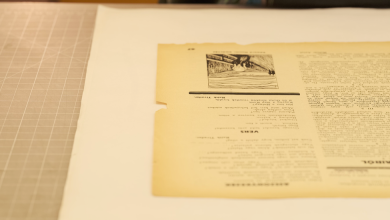In a Virus-Stricken Future, Humanity Endures Amid the Grief

HOW HIGH WE GO IN THE DARK
By Sequoia Nagamatsu
How do we react to the self-made devastation of the Anthropocene? With dark humor? Resistance? Anger? Sequoia Nagamatsu’s moving and thought-provoking debut novel, “How High We Go in the Dark,” has an answer: with mourning.
In the near future, scientists investigate a Siberia melting from climate change as if “some god had unzipped the snow-topped marshlands.” But an unearthed Neanderthal corpse hides something inside: a catastrophic virus. The resulting “Arctic plague” will transform the world. Humans build euthanasia amusement parks and funerary skyscrapers. They repair robotic pets that speak for the dead, or retreat into virtual reality worlds. Grief and loss permeate every page in ways resonant with our moment without feeling overburdened by it. (Nagamatsu published many of these chapters years before Covid emerged.)
If you notice my summary doesn’t name characters, that’s because this novel-in-stories features different narrators and settings in each chapter. If you’re a short-story lover — as I am — you’ll be impressed with Nagamatsu’s meticulous craft. If you crave sustained character and plot arcs, well, you’ll have to settle for admiring the well-honed prose, poignant meditations and unique concepts. Hardly small pleasures.
The reader might best approach the book like a melancholy “Black Mirror” season. Chapters with titles like “Elegy Hotel” and “30,000 Years Beneath a Eulogy” each center discrete, inventive conceits even as they take place in the same world. In “Pig Son,” a grief-stricken scientist bonds with an engineered pig who learns to talk as he grows organs for dying children. This is a lovely though bleak book. Humanity has long turned to humor in our darkest moments, but levity feels absent even in a chapter narrated by a stand-up comedian. That said, the somber tone unifies the disparate characters and story lines.
“How High We Go in the Dark” is a welcome addition to a growing trend of what we might call the “speculative epic”: genre-bending novels that use a wide aperture to tackle large issues like climate change while jumping between characters, timelines and even narrative modes. Some recent or upcoming examples include Matt Bell’s “Appleseed,” Hanya Yanagihara’s “To Paradise,” Anthony Doerr’s “Cloud Cuckoo Land” and Emily St. John Mandel’s “Sea of Tranquility.” The ur-text might be David Mitchell’s “Cloud Atlas,” with its nesting narratives stretching from the 19th century to a dystopian future. Why does this form speak to today? Maybe it’s a natural reaction to the last decade’s autofiction trend, with its straight realism and narrow subjectivity. Or perhaps it’s because the issues we now face feel so overwhelming that only a vast, imaginative canvas can begin to tackle them.
“Genre-bending” can set off alarms for science-fiction and fantasy readers who assume — often correctly — that a literary author is being praised for sprinkling genre elements into a work without real investment in them. This isn’t the case here. Nagamatsu squarely hits both the “literary” and “science fiction” targets, offering psychological insights in lyrical prose while seriously exploring speculative conceits.
How does one resolve such an expansive mosaic? Nagamatsu tries an interesting approach. Two final stories expand the scope even further: one sending humanity into the future on a generation starship seeking a fresh start, and another reaching into the cosmic past to mystically explain our origins. I found the former more successful than the latter. But ultimately it is the small human moments that burrow into the reader’s heart. At an amusement park for dying children, an employee watches as a boy’s mother “gave him one final hug and a sip from his juice bottle before pulling out a syringe.” Elsewhere, a lonely man falls in love with a woman in the metaverse who “talks about life, despite the sadness.” “How High We Go in the Dark” is a book of sorrow for the destruction we’re bringing on ourselves. Yet the novel reminds us there’s still hope in human connections, despite our sadness.




